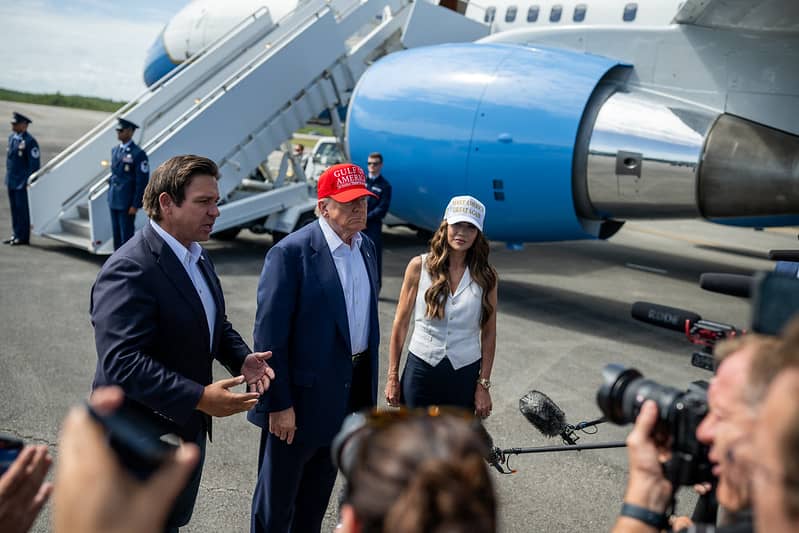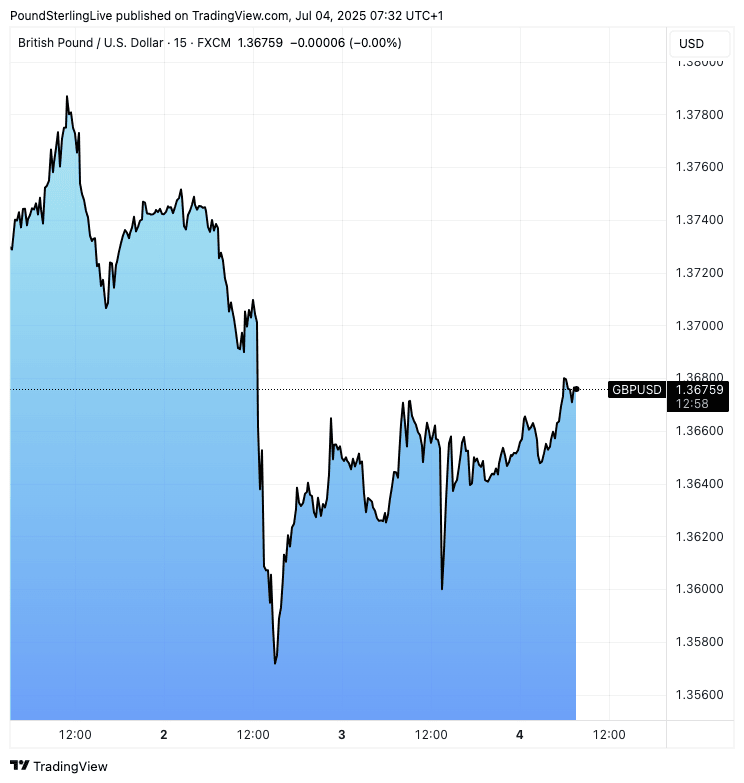
President Trump speaks to reporters. Official White House Photo by Daniel Torok.
U.S. President Donald Trump is pressing ahead with unilateral tariffs, starting today.
The Pound to Dollar exchange rate (GBP/USD) will switch its focus from UK debt issues back onto U.S. tariffs, which should offer some support.
Trump indicated letters to trading partners would be issued from Friday onwards, telling them that unilateral tariff rates will be paid from August 01.
It is assumed that trade agreements will be struck with the bigger partners before a July 09 deadline. However, failure to do so poses a real risk for the Dollar.
GBP/USD fell to 1.3562 on Wednesday shows FirstRate Data, but is looking to retrace those losses in the coming days helped by renewed focus on Trump's policy agenda, rising to 1.3679 ahead of the weekend.
"High tariffs on the large economies, including Europe and Japan, will increase the ‘sell US’ narrative in our view, weighing on USD," says Kristina Clifton, currency market strategist at Commonwealth Bank. "News on U.S. tariffs will likely be the key driver GBP/USD over the rest of the week and into next week."
Trump said to reporters that "10 or 12" letters were due to be issued on Friday, with additional letters coming "over the next few days". The process should be complete by July 09.
For U.S. consumers, this raises the prospect of higher prices in the coming months, which economists think can slow the economy and egg on the USD selloff.
"Tariffs are set to feed through to higher prices in the summer. With the Fed focussed on not falling behind the curve again, our base case remains that it will keep rates on hold for the rest of the year," says George Brown, Senior Economist at Schroders
Tariffs could reach as high as "60 or 70%" added Trump, "to 10 and 20% tariffs."
Above: GBP/USD is looking to recover recent losses, benefiting from a switch in focus back to tariffs.
The eventual split between the high and low ends of this incredibly vague guidance will be important for markets, as it will determine where the overall tariff rate will land.
The higher, the worse for U.S. consumers and the economy.
"Despite trade talks, the US is not pursuing reciprocity – tariff revenue is a strategic goal to finance at least part of the Big Beautiful Bill Act. Commerce Secretary Howard Lutnick has made it clear: zero-for-zero deals are off the table," says Inga Fechner, Senior Economist at ING Bank. "The average current tariff rate of 13% is unlikely to change by year-end. Protectionism is still the name of the game for the U.S."
The U.S. this week agreed a third major trade agreement, this time with Vietnam. In it, the U.S. gets to levy a 20% import tax on Vietnamese goods, while goods that come to the U.S. from other countries via Vietnam (mainly China) will be subject to a higher rate of 40%.
Vietnam agreed to cut all import tariffs. On paper, this is a win for the U.S., but analysts at Commerzbank explain why that's not the reality.
"In addition to numerous consumer goods, Vietnam exports coffee to the U.S., among other things. It is already questionable whether and how quickly the US can ramp up production of textiles, for example, which are imported from Vietnam," says Thu Lan Nguyen, Head of FX and Commodity Research at Commerzbank.
"When it comes to coffee, that's where it ends, as the necessary climatic conditions simply do not exist (apart from in Hawaii)," she adds.
U.S. consumers will find it hard to substitute to domestically produced alternatives, meaning they will most likely have to subsidise a large part of the tariff-induced price increase.
This explains why, at its heart, tariffs are a headwind to the economy and the Dollar.

